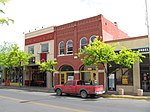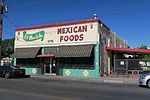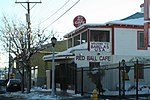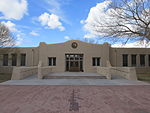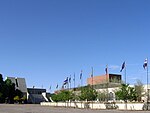South Broadway, Albuquerque

South Broadway is an inner-city neighborhood in Albuquerque, New Mexico, located southeast of Downtown. The neighborhood developed between the 1890s and early 1900s and has a housing stock consisting mainly of smaller Victorian homes and bungalows. It was historically a diverse working-class neighborhood and the center of the city's African American community. Along with other New Mexican cities such as Clovis and Hobbs, the neighborhood is one of the centers of Black American culture and history in New Mexico. Today, a sizeable African American community has presence in this area outering downtown Albuquerque, as well as the area near Highland High School, which is about 8% Black, as of 2021.
Excerpt from the Wikipedia article South Broadway, Albuquerque (License: CC BY-SA 3.0, Authors, Images).South Broadway, Albuquerque
Bell Avenue Southeast, Albuquerque Barelas
Geographical coordinates (GPS) Address Nearby Places Show on map
Geographical coordinates (GPS)
| Latitude | Longitude |
|---|---|
| N 35.07 ° | E -106.645 ° |
Address
Bell Avenue Southeast
87102 Albuquerque, Barelas
New Mexico, United States
Open on Google Maps

